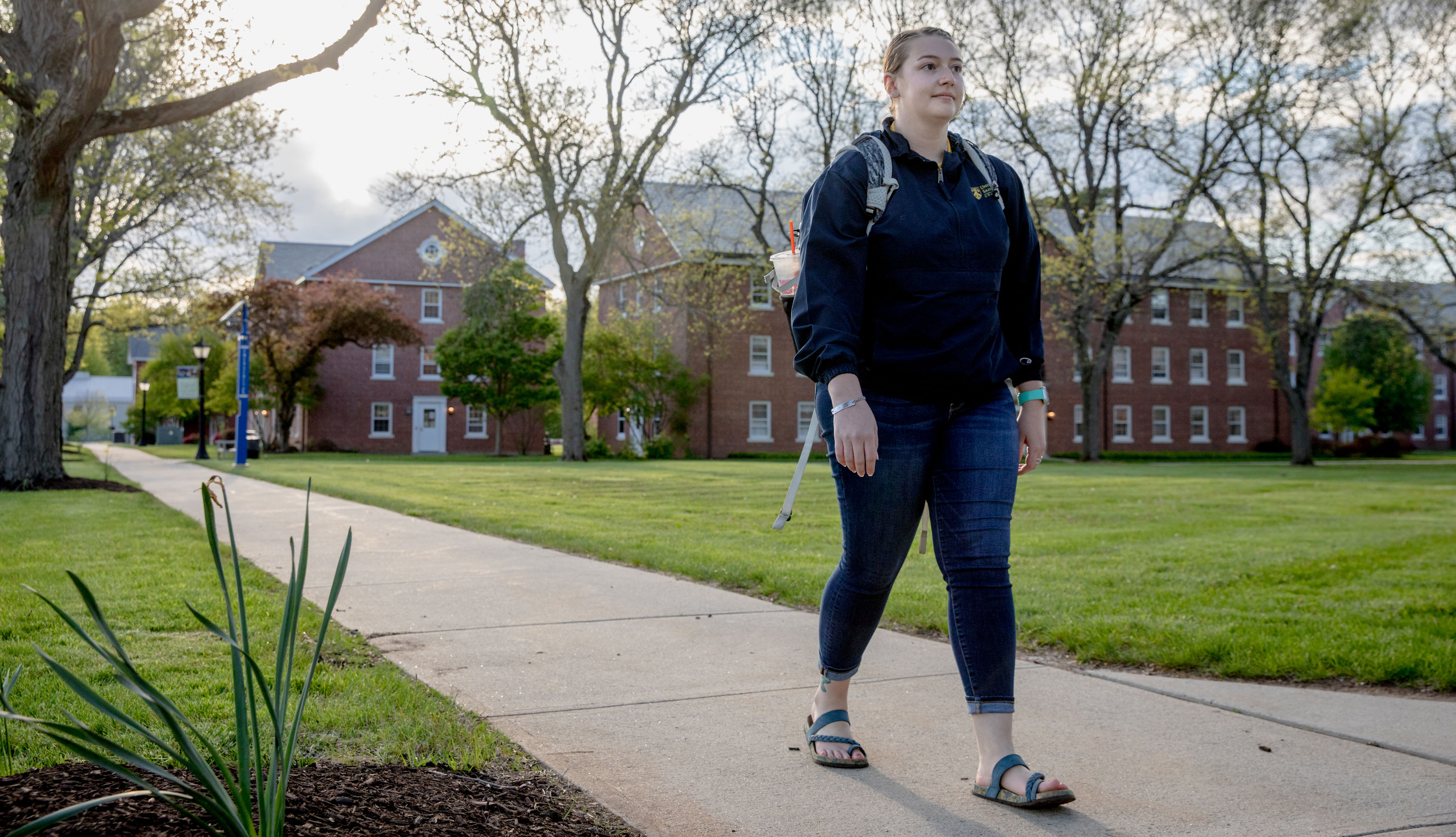AARP Hearing Center

When Kinsley Green used to see an older person reaching for something on a low shelf at the grocery store, her first instinct would be to rush in to help.
“I’d automatically reach down for them and put it into their cart,” said the 19-year-old sophomore at the University of Saint Joseph, in West Hartford.
But after completing AARP Connecticut’s Disrupt Aging Classroom curriculum, she realizes now that plenty of older adults would be fine without her assistance.
“It might be nice, but it’s not needed,” said Green, an aspiring physician assistant from Groton. Now she takes a new approach: asking before stepping in.
It’s a small change but part of a larger attitude shift that AARP hopes to promote with the program, which the organization launched at four Connecticut universities in 2019 and now offers at schools nationwide.
“People have this negative image of aging. We see it changing slowly, but it needs to change more,” said Erica Michalowski, AARP Connecticut’s outreach director. She developed the curriculum with AARP volunteers and Borrow My Glasses, a Madison-based aging and caregiving consulting firm.
“The way for us to really tackle that is to start at the beginning, when people are starting out in their careers,” she said.
The 2.5-hour curriculum, provided at no cost, builds on AARP’s efforts to bring age inclusivity to college campuses. So far it has been used at 21 universities in 15 states, including six campuses in Connecticut, and has reached more than 2,400 students.
Changing perceptions
Presented by trained AARP volunteers, the program is currently offered in a live, interactive virtual format because of COVID-19.
The course covers demographic and aging trends, ageism, the importance of recognizing older adults as multidimensional individuals and examining everyone’s stake in the aging trend.
It challenges students to consider their perceptions of aging. Many think that most older adults live in nursing homes, but surveys show that only 2 percent of those 65-plus do.
As Americans live longer, young people are more likely to interact with older adults on the job or in their community.
“Eventually, they’re going to be working alongside, or even managing, people across many generations, no matter what field they enter,” said Lisa Fanelli, an associate professor of health science who brought the AARP curriculum to Saint Joseph.
Fanelli, who has worked with older adults for 25 years as an occupational therapist, said age is too often left out of the conversation on inclusivity and diversity.
The course was initially offered just to students pursuing careers in health sciences, but now it’s available to other majors.
Green said it was the first time she had been taught about aging issues. She said one of the biggest takeaways was that “your age does not equate to your health.”
Michalowski hopes the course will inspire people to see aging as a privilege and a time to explore, not a period of decline.
To bring the curriculum to your college campus, contact Michalowski at ct@aarp.org or call 860-548-3163.
Visit aarp.org/disrupt-aging/about-us/classroom to learn more.
Natalie Missakian is a writer living in Cheshire, CT.
More on Disrupt Aging
Gerontologists make the case for age inclusivity on college campuses































































